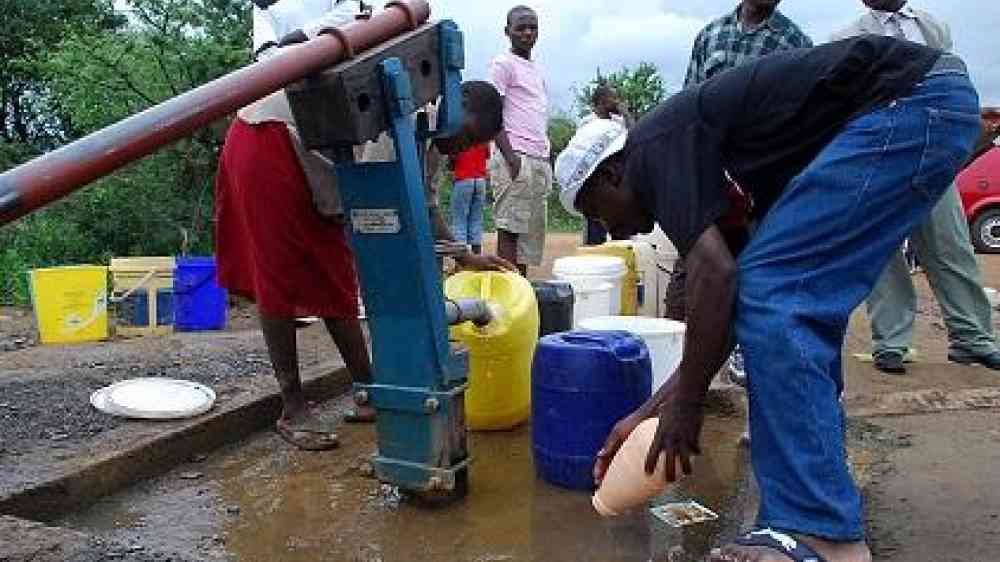The challenges of DRR in Zimbabwe

HARARE, 29 July 2015 – Zimbabwe is working to build its communities’ capacity to understand and reduce disaster risk, in a country often confronted by floods or droughts, but poverty and unemployment can make action a challenge.
“There is a growing realisation that the best way to effectively deal with and prevent disasters is to promote an uptake in disaster risk reduction strategies,” Ms. Sibusisiwe Ndlovu, Zimbabwe’s Civil Protection Directorate Deputy Director, told UNISDR.
“The best way to do that is by capacitating local communities to understand hazards and risks - whether natural or manmade - and make them the owners of rural and urban grassroots strategies since they are the ones that are affected when emergencies occur,” said Ms. Ndlovu.
To help spread the message, the directorate deploys staff to local communities to educate them on how to identify and map hazards and risks, as well as how to draw up disaster risk reduction strategies.
The trainers are selected from within the disaster management committees in the communities, a flagship initiative of the directorate. These include agricultural extension workers, police officers and community health providers.
These “robust”, year-round campaigns target communities historically prone to annual or periodic hazards and have raised local knowledge of disaster risks, said Ms. Ndlovu.
Sustainable action is difficult in hard-pressed communities, however.
“The knowledge and skills that the communities are equipped with doesn’t necessarily translate into positive preventative or proactive action because of a host of underlying risks such as poverty and unemployment,” she explained.
“People might know what disaster, hazards or risks are typical in their respective communities but they may fail to act accordingly. For instance, community members may still be forced to chop down trees to use as firewood because they have no alternative sustainable sources of fuel,” she said.
Ms. Ndlovu urged the private sector and other stakeholders to fund disaster risk reduction programmes and resilient infrastructure projects.
The initiatives by the directorate - which collaborates with ministries, non-governmental organizations and independent partners - predate the adoption this March of the Sendai Framework for Disaster Risk Reduction. But they tally with that 15-year global blueprint, which calls for better understanding of risk, enhanced preparedness, an approach that takes all hazards into account and for disaster risk reduction to be a key factor in development policies.
According to the directorate’s national hazard and disaster profile, droughts, floods and resultant food insecurity and disease outbreaks are common. Other hazards include environmental degradation in peri-urban and rural areas, soil and water pollution and human-wildlife conflict.
Floods are common in low-lying areas of the country such as the northeastern, rural district of Muzarabani, in the Zambezi Valley. Southern Zimbabwe is frequently hit by dry spells that severely reduce crop yields.
The Zimbabwe Red Cross Society (ZRCS) is working in several rural and urban districts at high risk of disasters including Binga, Chipinge, Kariba, Muzarabani and Mwenezi. In the capital Harare, it is deployed in the low-income suburb of Dzivaresekwa, among the worst affected by a 2008 cholera epidemic during which claims over 4,000 lives.
Despite the difficulties, ZRCS Disaster Management Coordinator Desmond Mudombi said community-based initiatives can empower people.
Like the Civil Protection Directorate, the ZRCS is educating vulnerable communities on hazards and early warning systems and helping them build infrastructure to cope with existing hazards, such as the construction of bridges in flood-prone areas.
“Where we have carried out sensitization activities and provided disaster preparedness and response hardware such as footbridges across flooded rivers, we have noticed that the number of women delivering babies at home or children failing to attend school due to flooding has dropped,” said Mr. Mudombi.